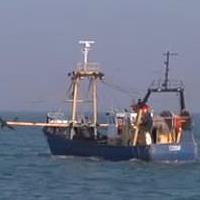(LUXEMBOURG) – The EU agreed on 2021 fishing catch limits for the Baltic Sea Tuesday, with an acceptance of the need to continue decreasing the fishing opportunities for several fish stocks to help them recover.
Ministers decided to continue the closure of the Eastern Baltic cod fishery and to provide only a by-catch quota, which was again significantly reduced compared to last year’s. The biggest cuts in the total allowable catches (TACs) were for the herring of the Western and Central part of the Baltic Sea, in line with the latest scientific advice.
“This agreement is a viable solution forward for fishermen and fishery resources in the Baltic Sea,” said Germany’s food and agriculture minister Julia Klöckner, for the EU presidency: “It is an agreement that strengthens our efforts to sustain and help stocks recover while ensuring activities for fishermen.”
Fisheries ministers agreed to a moderate increase of the TACs for herring in the Gulf of Riga, Western Baltic cod, plaice, sprat and salmon in the main basin area of the Baltic Sea, while salmon in the Gulf of Finland will be moderately decreased. The TACs for the Bothnian herring will remain at the same level as last year.
In addition to setting TACs and quotas on some species, the Council agreed on additional measures which include:
- Maintaining the existing summer spawning closure for the Eastern Baltic cod with an exception for purely scientific fisheries and small-scale coastal fisheries using specific gears.
- Extending the spawning closure period for cod in Subdivision 24.
- Maintaining the ban on recreational fisheries of Eastern Baltic cod, and maintaining the reduced bag limit for Western Baltic cod recreational fisheries.
- Declaration by relevant Member States not to use year-to-year flexibility for Eastern Baltic cod.
Traditionally, this regulation also includes an amendment to the 2020 fishing opportunities to take into account recent advice for Norway pout. The Council therefore also decided on fishing opportunities for this important fishery whose season will start at the beginning of November. Given that this stock is partly present in UK waters, the TAC is currently only set until the end of the year and will need to be revised then.
Preparatory work conducive to finding swift agreement was carried out at regional level through BALTFISH, a body providing a platform for discussion on important fisheries issues in the Baltic Sea, currently under Estonia’s chairmanship.



